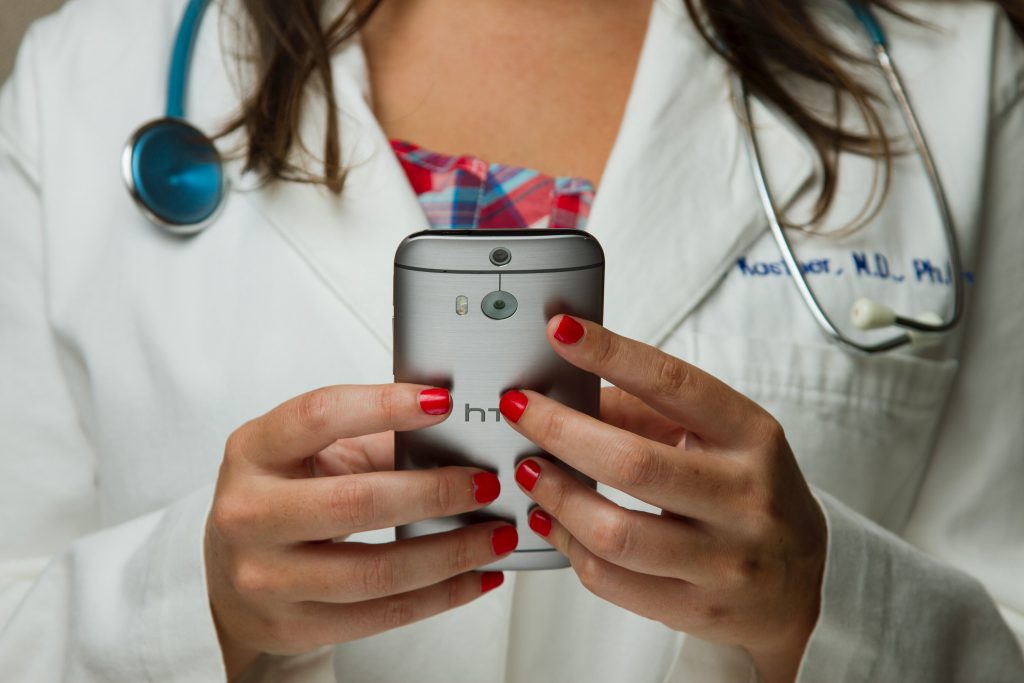
Today’s healthcare industry is an incredibly refined and advanced field compared to decades ago, as a result of many modern technological advances that have transformed the field. Over the past few decades, there has been a significant amount of investment in medical technology that is now used by healthcare professionals including nurses and nurse practitioners on a regular basis. Technology now plays a hugely important part in a nursing career, from starting out with initial nursing training to working full-time as a registered nurse or advanced practice registered nurse. Today, nurses rely on technology when working more so than ever before. Many of today’s healthcare professionals would not be able to imagine doing their job without the technology that is now available to them.
Technology doesn’t play a central part in the day-to-day job of a nurse, but it is also often crucial for preparing them for this role.
Nursing Education
The impact of technology on the field of nursing can be seen from before a student nurse is fully- trained and qualified to work in this role. Thanks to modern technology and the internet, it has become easier than ever for aspiring nurses to get a degree and other qualifications and certifications. Online degree programs are now available for nurses at every level, from those who are new to the profession getting a BSN to registered nurses who want to take their career to the next level by qualifying as an adult-gerontology nurse practitioner thanks to the online AGNP programs from Baylor University.
Electronic Health Records
The introduction of an electronic health record system was an event that changed healthcare as a whole. Before nurses and other healthcare professionals had access to computers and the cloud for storing vast amounts of patient records, all records had to be kept by hand, which took up huge amounts of physical storage spaces including row upon row of filing cabinets. Today, there’s no need to dedicate thousands of rooms to medical record storage as EHRs keep all medical records stored electronically. Not only has this served to ensure that medical records are at a much lower risk of being lost or damaged, but it has also made it possible for nurses and other healthcare professionals to save significant amounts of time due to the ability to simply search for a record on the computer
rather that sifting through hundreds of records in a filing cabinet. EHRs have also made record- sharing among healthcare professionals much easier, leading to a seamless experience for patients when it comes to transferring care and referrals.
Automatic Blood Pressure Cuffs
If you have ever had your blood pressure taken then you’ll probably be familiar with an automatic blood pressure cuff, which is medically known as a sphygmomanometer. This device is used to measure the heart rate and blood pressure of a patient. Before they were introduced, nurses had to do this manually. Automatic blood pressure cuffs have had a massive impact on the amount of time it takes for a nurse to deliver this procedure, reducing the effort required and freeing up time to focus on patient care. Rather than manually pumping the blood pressure cuff by hand, all nurses need to do is fit it to the patient and ask them to wait for a minute. Along with saving time, the device is also very effective in reducing human error.
Portable Defibrillators
Until the 20th century, manually administering CPR was the only available method for attempting to resuscitate a patient who had suffered cardiac arrest. The defibrillator is now a key piece of medical equipment that was invested by William B. Kouwenhoven in 1930. A student at the John Hopkins University School of Engineering, Kouwenhoven studied the impact of electricity on the human heart, resulting in him creating this device that can be used to attempt to restart the heart if it stops beating. In 1947, the device was used for the first time on a patient, successfully saving his life. Since then, the defibrillator has been improved and updated several times to become the modern device that is commonly used in healthcare today. Automated External Defibrillators are used in hospitals and other healthcare settings along with being commonly available in a range of public places, along
with instructions for use that allow the general public to potentially save a life before medical help arrives.
Electronic IV Management
Many modern technologies have made the daily roles and responsibilities of a nurse much easier and faster, including electronic IV management. Before the electronic IV management was introduced in nursing care, nurses would be required to pay constant attention to patients on an IV drip to ensure the uninterrupted flow of fluids on medicine. Since even small movements can impact an IV that has been administered to a patient, it would require a nurse to be present the entire time to monitor the patient, which was very time-consuming along with being costly for the healthcare organizations that were required to hire more nurses to ensure that all patients received the right care. Electronic IV monitoring systems continue to administer the dose after the IV has been begun by the nurse. These systems can also automatically correct mistakes or send an alert to the nurse if intervention is required.
Ultrasounds and Sonography
Ultrasound is now a key part of medical care, particularly when it comes to maternity care.
Healthcare for pregnant women and babies has been completely transformed by the introduction of sonography. Before the ultrasound was widely used, maternity care was much more basic compared to today, with very little that healthcare professionals, nurses and midwives could do to track a pregnancy’s progress. Along with being a common procedure for maternity care, ultrasounds have also made it much easier for nurses and other healthcare professionals to conduct medical procedures such as needle biopsies by providing more visibility of the condition.
Over the past decades, the medical industry and nursing as a career has been transformed by advancements in technology.












